Your wildlife paradise could be a toxic takeover! You planted butterfly bush for pollinators… Only to watch it choke out every native bloom. You bought “wildlife-friendly” Japanese honeysuckle… And now it’s strangled your hedgerow. Stop feeding 12 so-called helpers that behave like invaders. They push aside songbird snacks, hijack streams, and rewrite your garden’s story. Swap them for 10 real heroes: Milkweed that monarchs crave. Purple coneflower buzzing with bees. Blazing star waving off drought. Penstemon that hums for hummingbirds. Switchgrass, goldenrod, ironweed, and more. Plant with purpose. Restore the balance. Turn your plot into a true haven. Let your garden light up with life—instead of spreading a silent invasion.
English Ivy
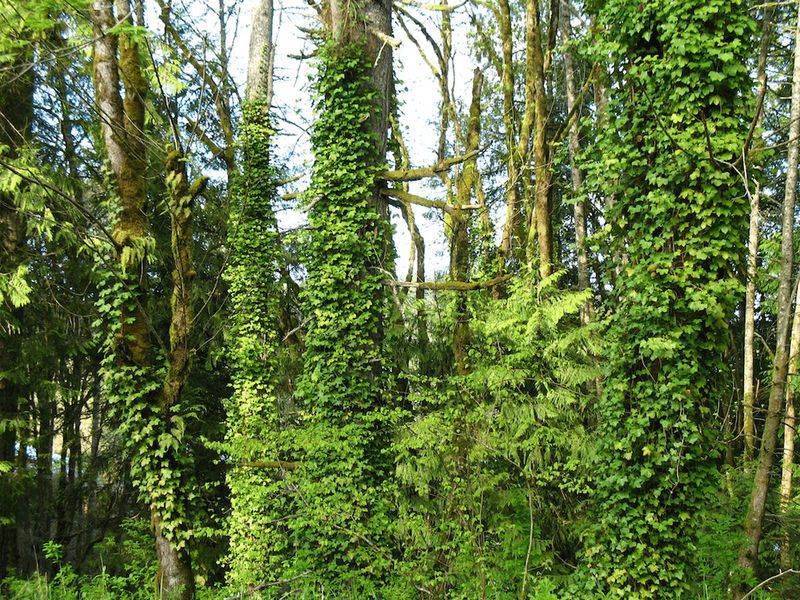
English Ivy may charm with its lush, evergreen appearance, but beneath that allure lies a plant capable of smothering trees and shrubs. Its aggressive climbing and dense coverage can quickly overwhelm native vegetation, leading to significant ecological disruption. Introduced as a decorative element, it now poses a threat to forests and gardens alike.
Consider removing this tenacious vine and replace it with a native ground cover like Virginia Creeper, which provides similar visual appeal without the environmental risks. Did you know? English Ivy can harbor pests and diseases detrimental to local flora.
Bamboo
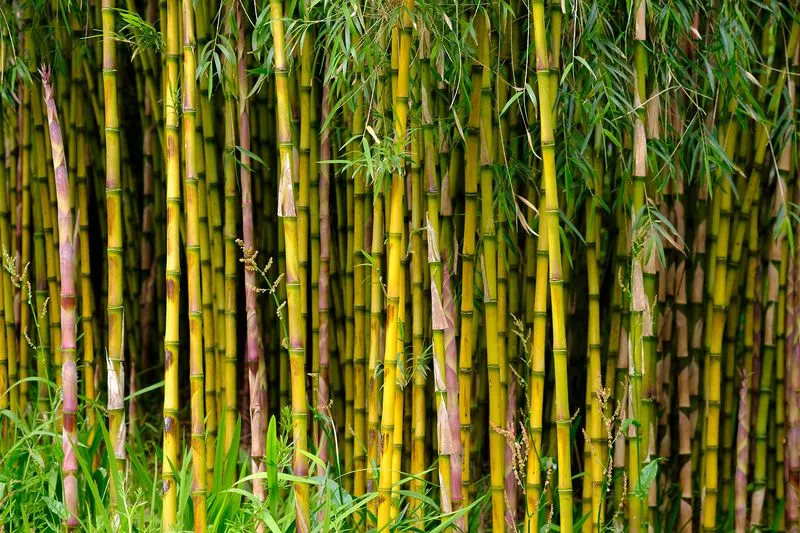
Bamboo might evoke tranquility and exotic charm, yet its rapid spread can turn serene landscapes into unruly thickets. This plant’s extensive root system can spread aggressively, suffocating native plants and altering ecosystems. Originally planted for its fast growth and aesthetic appeal, bamboo quickly becomes unmanageable.
Swap it for native grasses like switchgrass, which offers habitat for wildlife without the risks of invasion. Fun fact: Some bamboo species grow over 3 feet in a single day, making them a formidable force in any garden.
Japanese Barberry

Japanese Barberry, with its vibrant foliage and attractive berries, seems a gardener’s delight. However, this prickly shrub creates dense thickets that outcompete native species and foster environments for ticks. Initially admired for its ornamental qualities, its invasiveness is now a challenge for native woodlands.
Swap it out for native alternatives like the American Barberry, which offers similar aesthetics without the ecological drawbacks. Intriguingly, studies show that tick populations are higher in Japanese Barberry-infested areas, increasing health concerns.
Purple Loosestrife
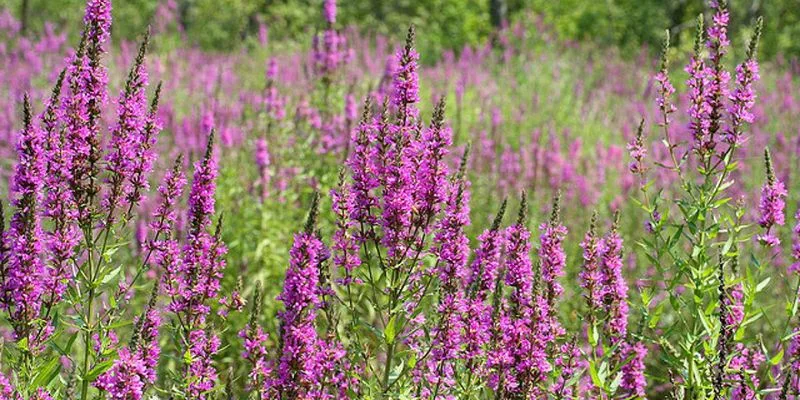
Purple Loosestrife captivates with its striking purple blooms, yet it spells disaster for wetlands. This aggressive perennial displaces native plants, reducing biodiversity and altering water flow. Initially introduced for ornamental purposes, it now threatens fragile aquatic ecosystems across the globe.
Opt for planting native wildflowers like Blue Flag Iris, which offers beauty without ecological damage. Did you know? A single Purple Loosestrife plant can produce over a million seeds annually, making it a prolific invader.
Norway Maple
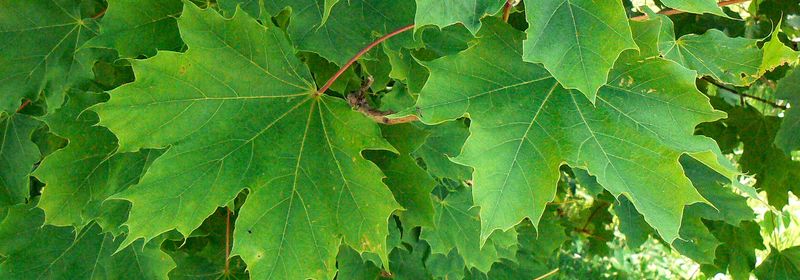
Admired for its shade and resilience, the Norway Maple has spread beyond cultivation, casting dense shadows that suppress understory vegetation. Its adaptability and prolific seed production enable it to dominate local landscapes, threatening native flora.
Replace it with native trees like the Sugar Maple, which provides similar benefits without the ecological impact. Interestingly, the Norway Maple’s dense canopy often leads to reduced plant diversity beneath it, impacting wildlife that depends on a varied plant ecosystem.
Autumn Olive
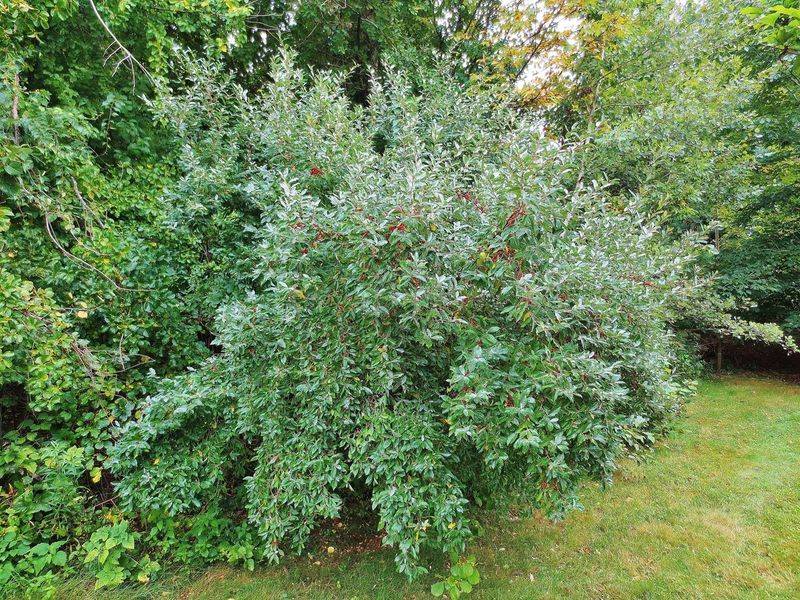
Autumn Olive, with its silvery leaves and red berries, was once heralded as a wildlife-friendly shrub. Its rapid growth and nitrogen-fixing abilities, however, allow it to dominate landscapes, reducing biodiversity. Originally introduced for erosion control, it quickly became a formidable invader.
Consider replacing it with native shrubs like serviceberry, which supports wildlife without overwhelming local ecosystems. Did you know? Autumn Olive can alter soil chemistry, further hindering native plant growth.
Garlic Mustard
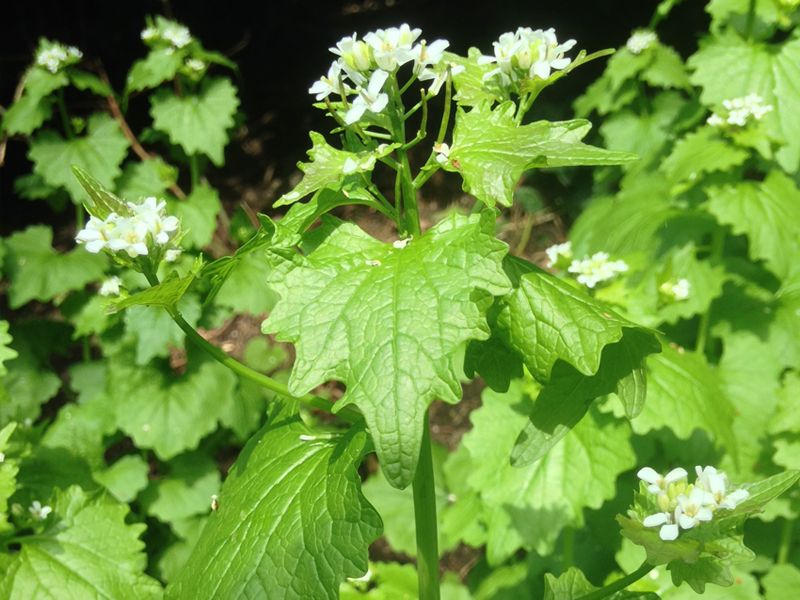
Garlic Mustard appears unassuming with its white flowers, yet this biennial herb aggressively spreads through forest floors. It releases chemicals that suppress native plant growth, leading to reduced biodiversity. First introduced for culinary uses, it now poses a significant threat to woodland ecosystems.
Replace it with native wildflowers like Trillium, which thrive without harming other species. Intriguingly, Garlic Mustard can persist in seed banks for years, complicating eradication efforts.
Tree of Heaven
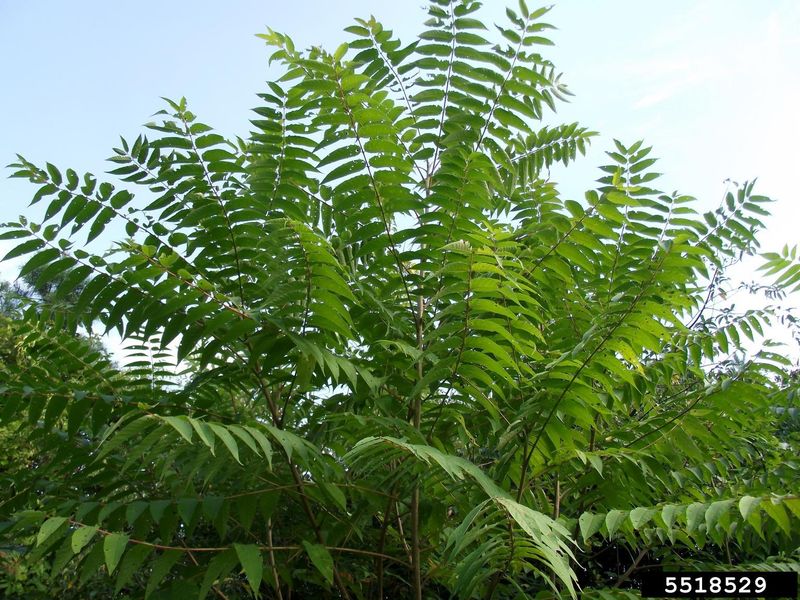
The Tree of Heaven, with its broad leaves and rapid growth, may seem like an urban marvel. Yet, its invasive nature and allelopathic properties allow it to overpower native plants, degrading ecosystems. Known for its resilience, it spreads aggressively through both seeds and root suckers.
Swap it for native trees like the Red Maple, offering similar benefits without the ecological cost. Interestingly, the Tree of Heaven is also a preferred host for the invasive Spotted Lanternfly, compounding its ecological impact.
Mimosa Tree
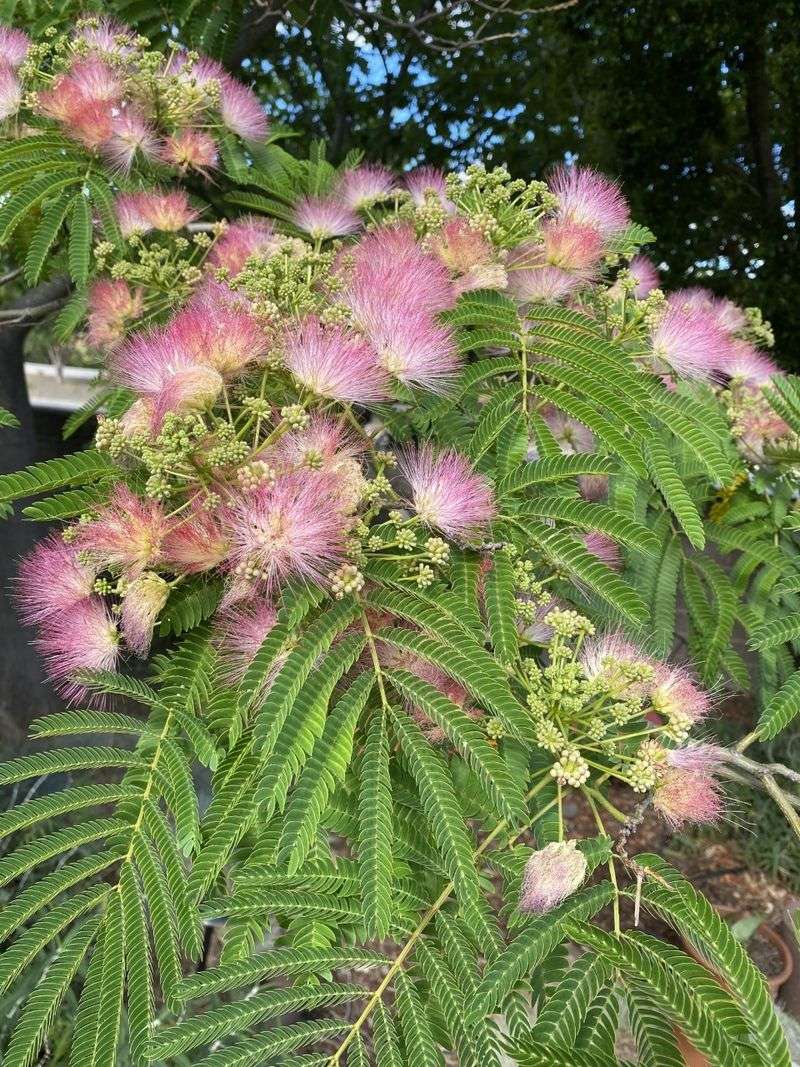
The Mimosa Tree enchants with its pink, fluffy flowers, yet it easily escapes cultivation to invade open spaces. Its ability to fix nitrogen allows it to thrive in poor soils, outcompeting native plants. Initially favored for its ornamental beauty, it’s now a concern for southern landscapes.
Replace it with native trees like the Eastern Redbud, which provides beauty and supports local wildlife. Did you know? The Mimosa Tree’s seed pods can remain viable for years, aiding its invasive spread.
Japanese Knotweed
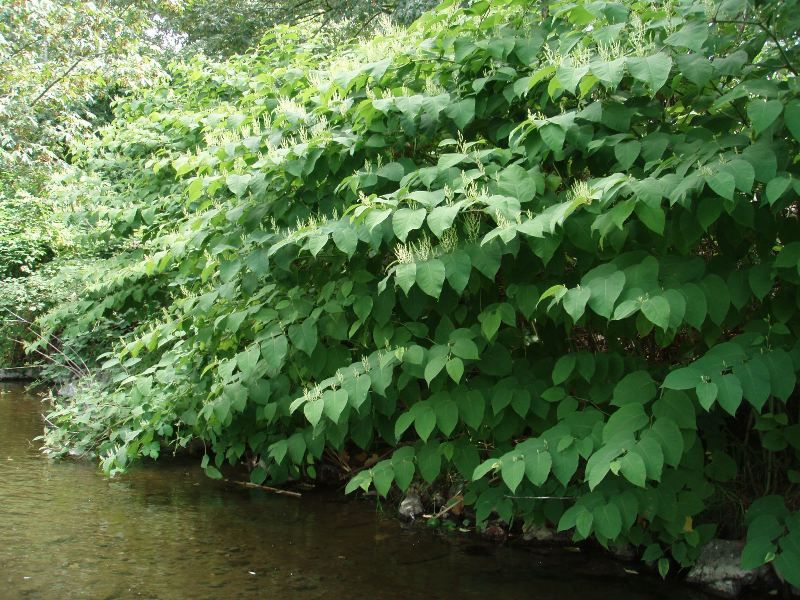
Japanese Knotweed, towering with bamboo-like stalks, is a formidable invasive species. It thrives in various environments, displacing native plants and damaging infrastructure with its robust root system. Initially introduced for ornamental purposes, it now threatens ecosystems across the globe.
Consider native alternatives like willows for riverbanks, offering similar benefits without the aggressive spread. Interestingly, Japanese Knotweed can grow through concrete, highlighting its resilience and risk to human habitats.
Multiflora Rose

Multiflora Rose, blooming with clusters of white flowers, was once popular for its hardiness and erosion control. However, its rapid spread through seed and runners results in dense, thorny thickets that displace native species. Initially introduced for agricultural benefits, it now dominates landscapes.
Opt for native roses like the Carolina Rose, which offer ecological benefits without invasiveness. Did you know? Multiflora Rose was promoted by the USDA for soil conservation before its invasive potential was realized.
Privet
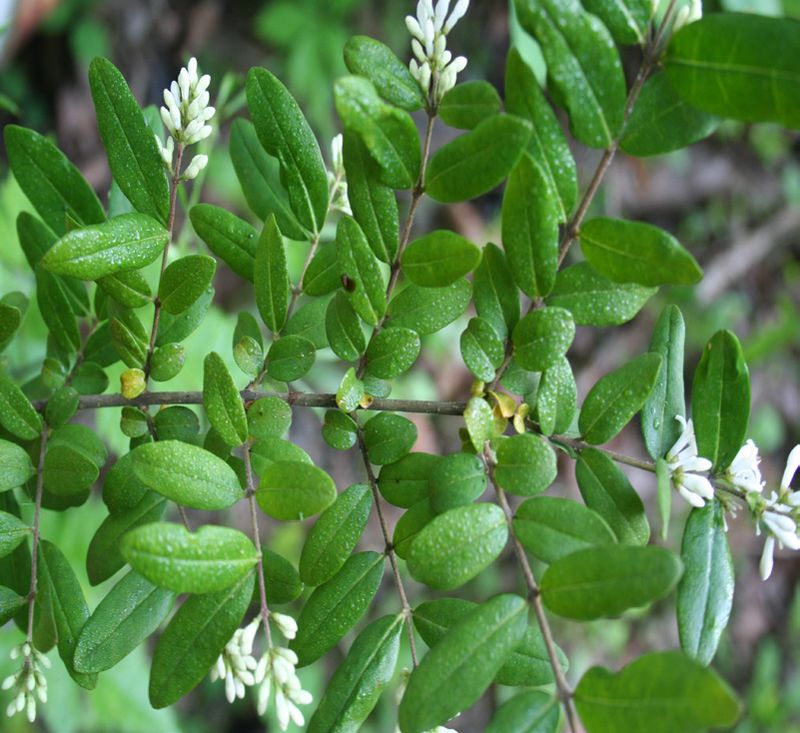
Privet, often used for hedging, deceives with its neat appearance. When left unchecked, it escapes cultivation, forming dense thickets that crowd out native plants. Its adaptability and prolific seed production enable it to thrive in various environments.
Replace it with native shrubs like the Arrowwood Viburnum, providing similar structure and wildlife support. Intriguingly, privet’s dense growth can alter habitats, impacting species that depend on diverse plant communities for survival.
Virginia Creeper
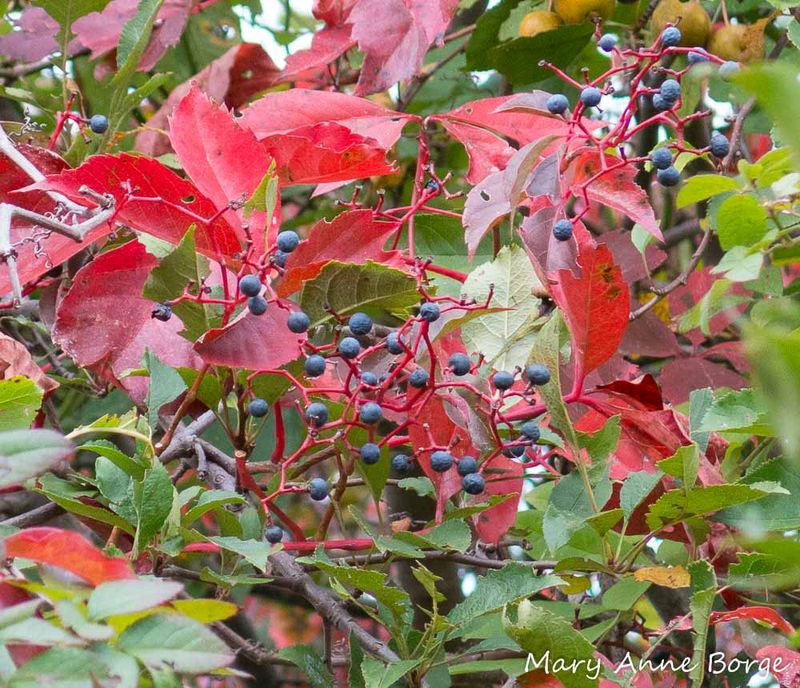
Virginia Creeper, with its vibrant autumn foliage, offers a non-invasive alternative to English Ivy. This native vine supports wildlife without the aggressive growth that threatens local flora. Unlike its invasive counterparts, Virginia Creeper coexists with native plants, enriching biodiversity.
Its berries provide food for birds, making it a win for gardeners and wildlife enthusiasts alike. Did you know? Virginia Creeper’s leaves turn a brilliant scarlet in the fall, adding seasonal beauty to any landscape.
Switchgrass
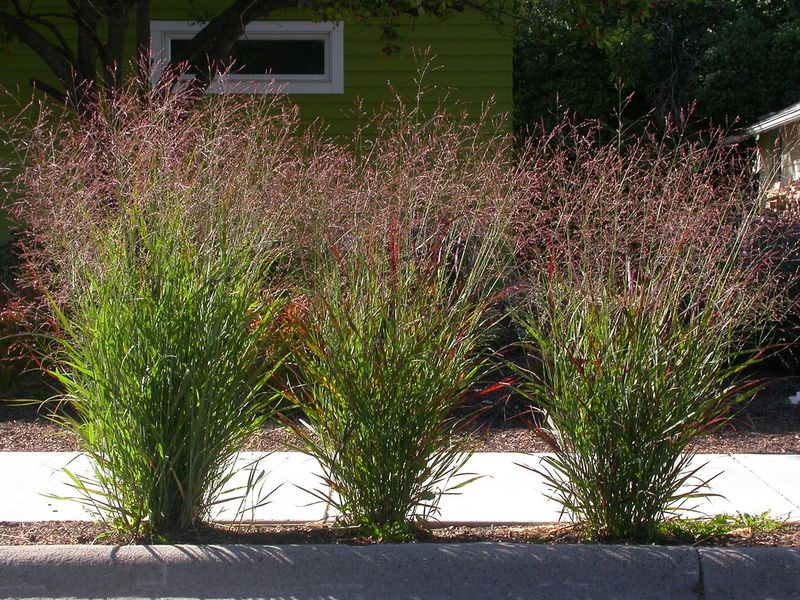
Switchgrass is a native grass that stands in stark contrast to invasive bamboo. Its elegant form and golden autumn hue offer visual appeal while supporting local ecosystems. Unlike bamboo, switchgrass provides habitat for wildlife without the risk of aggressive spread.
Often used in prairie restoration, it plays a crucial role in soil conservation and ecosystem health. Did you know? Switchgrass thrives on marginal lands, making it a sustainable choice for eco-friendly gardening.
American Barberry
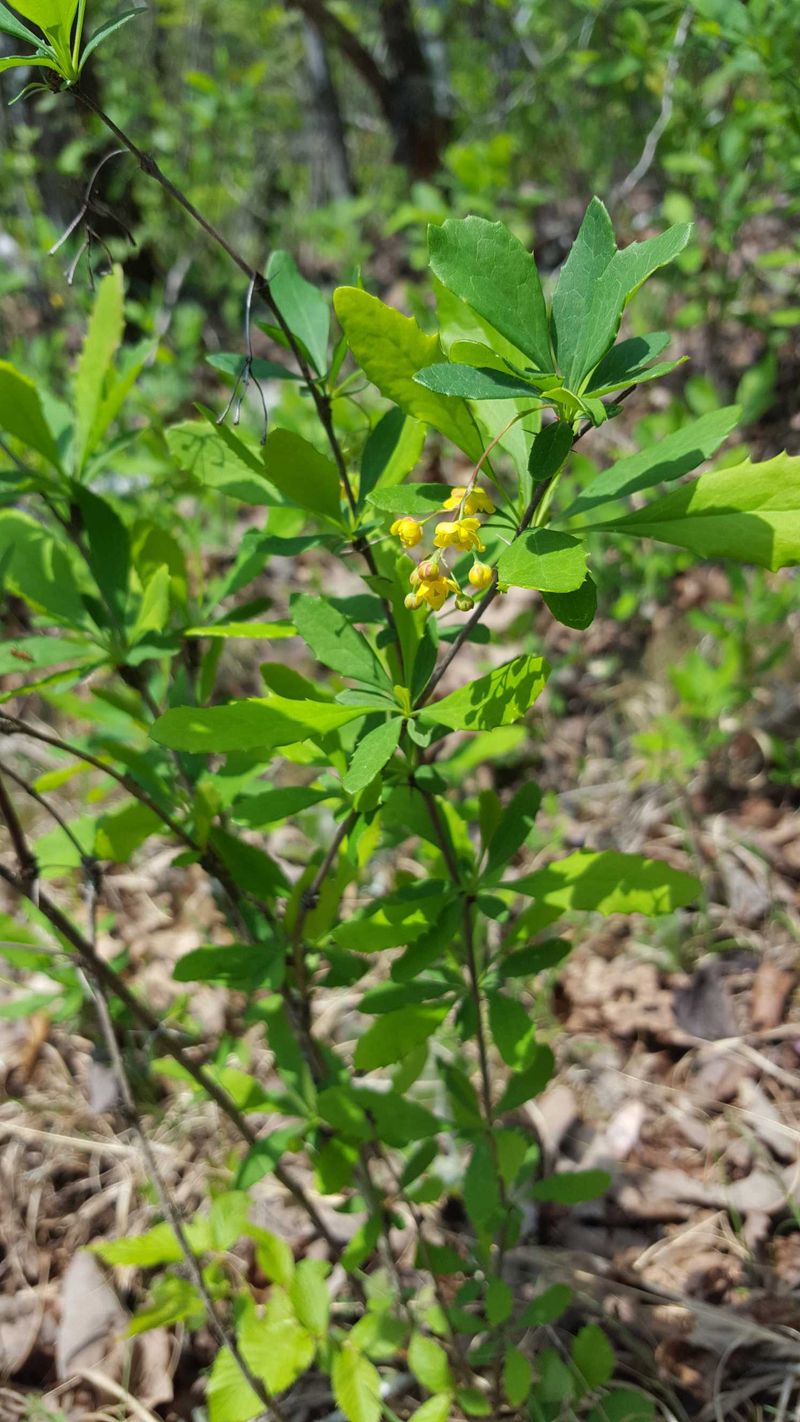
American Barberry, with its delicate yellow flowers, presents a native alternative to the invasive Japanese Barberry. This shrub complements gardens without the risk of creating dense, tick-infested thickets. Its flowers attract pollinators, while its berries provide food for wildlife.
Choosing American Barberry supports local ecosystems and reduces the ecological footprint of your garden. Interestingly, the American Barberry once faced its own battles with eradication efforts due to a mistaken belief it spread wheat rust.
Blue Flag Iris
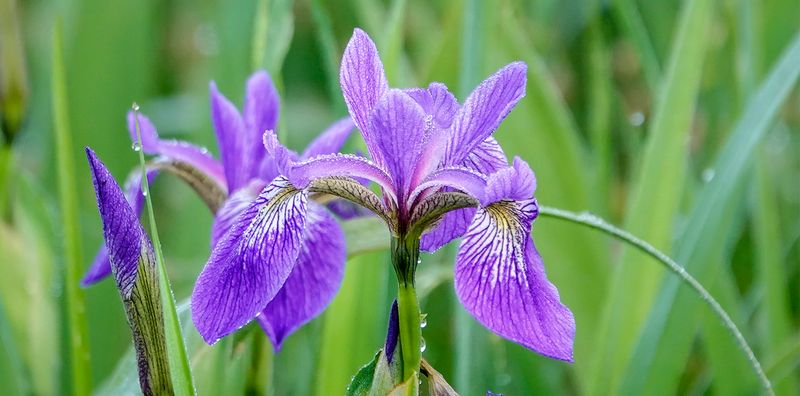
Blue Flag Iris is a native wildflower that provides an alternative to Purple Loosestrife in wetlands. Its striking blue-purple flowers attract pollinators, while its non-invasive nature supports diverse ecosystems. Unlike the loosestrife, it coexists peacefully with native flora.
Planting Blue Flag Iris helps preserve wetland health, offering beauty without ecological damage. Did you know? The Blue Flag Iris is not just beautiful but also plays a role in phytoremediation, helping purify water and soil.
Sugar Maple
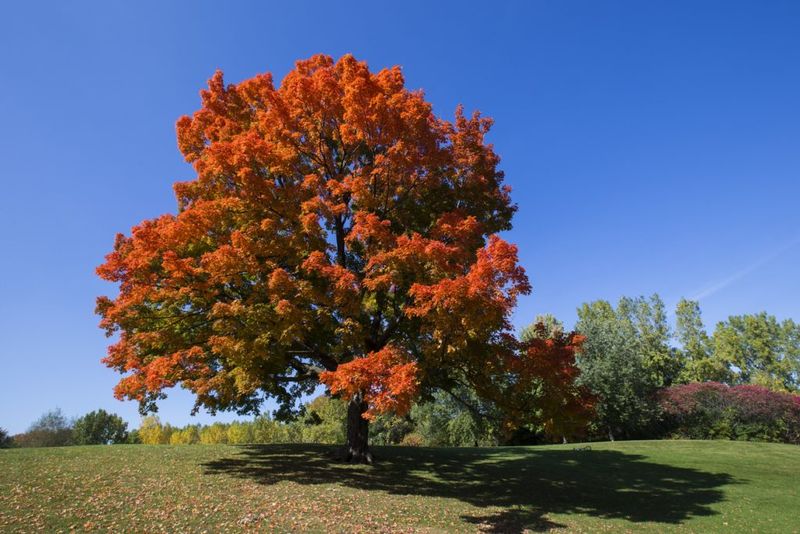
The Sugar Maple, with its stunning fall foliage, is a native alternative to the invasive Norway Maple. This tree not only enhances landscapes with its seasonal color but also supports a range of wildlife, from birds to insects.
Its sap is famously harvested for syrup, adding a sweet incentive for choosing this native beauty. Did you know? The Sugar Maple’s presence is an indicator of rich, healthy soils, making it a valuable addition to any garden or woodland.
Serviceberry
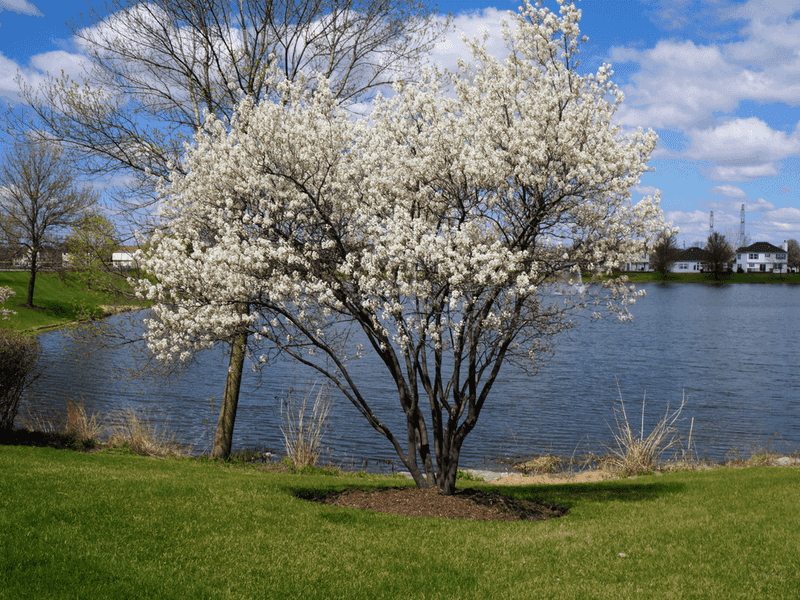
Serviceberry, with its white blossoms and sweet berries, offers a wildlife-friendly alternative to Autumn Olive. This native tree supports a range of species, providing food and shelter throughout the year. Its berries are a favorite among birds and are also edible for humans.
Choosing Serviceberry enriches local ecosystems while offering seasonal beauty and bounty. Did you know? Serviceberry is one of the first trees to bloom in spring, signaling the end of winter and the beginning of new growth.
Trillium
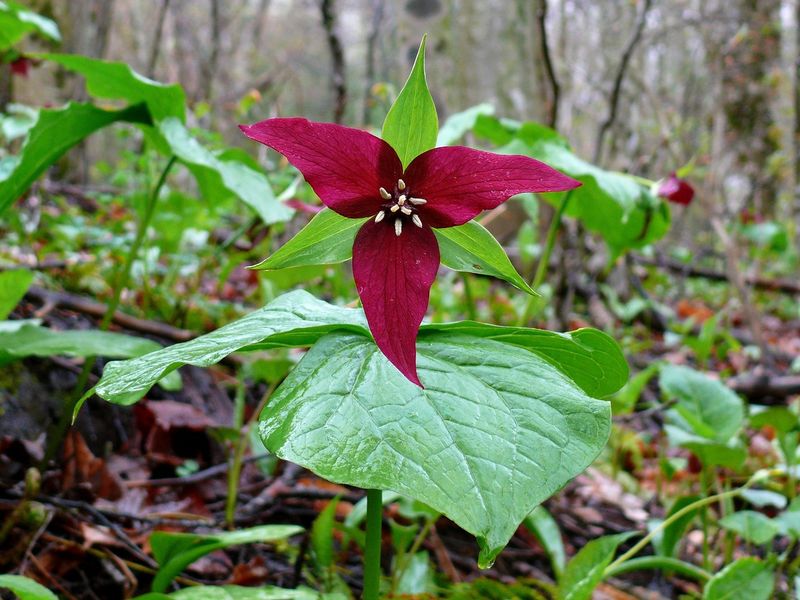
Trillium, with its distinctive three-petal blooms, is a native wildflower perfect for replacing invasive Garlic Mustard. Its presence in woods and gardens supports biodiversity, attracting pollinators and coexisting with other native plants.
Planting Trillium enhances woodland health and adds unique beauty to natural landscapes. Fun fact: Trillium is often referred to as the “Wake Robin,” as it blooms around the same time robins reappear in spring.
Red Maple

The Red Maple, with its vibrant red leaves, offers a native replacement for the invasive Tree of Heaven. This tree is adaptable and supports diverse wildlife, from nesting birds to sap-loving insects. Its fast growth and striking colors make it a garden favorite.
Choosing Red Maple contributes to ecological balance and offers seasonal beauty. Did you know? The Red Maple is one of the most common and widespread deciduous trees in North America, admired for its vibrant fall colors.
Eastern Redbud
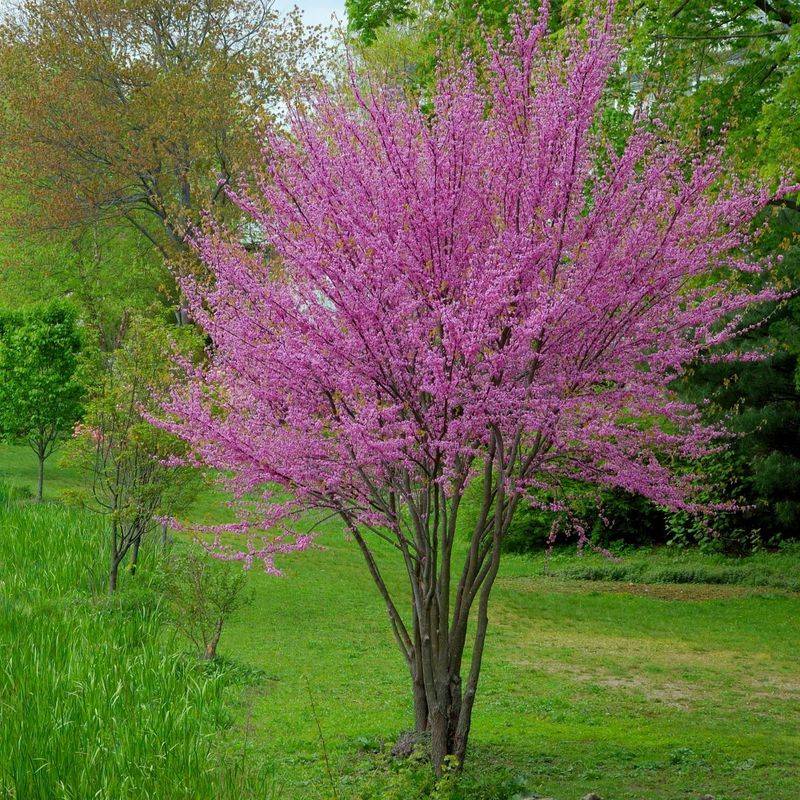
Eastern Redbud captivates with its heart-shaped leaves and pink blossoms, serving as an excellent alternative to the invasive Mimosa Tree. This native tree enhances gardens with early spring color and provides vital resources for pollinators.
Planting Eastern Redbud supports local ecosystems and adds ornamental value to landscapes. Did you know? The Eastern Redbud is often called the “Judas Tree” in folklore, as it’s believed Judas Iscariot hanged himself from a tree of this species.
Willows

Willows, with their graceful, arching branches, offer a native solution to the invasive Japanese Knotweed. These trees stabilize riverbanks and provide habitat for a host of wildlife, from birds to beavers. Their flexibility in various environments makes them valuable for ecological restoration.
Planting willows supports biodiversity and prevents erosion along waterways. Did you know? Willow bark contains salicin, a compound used in the development of aspirin, showcasing its versatility beyond landscaping.

